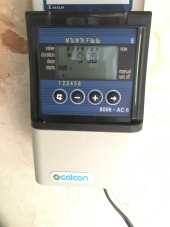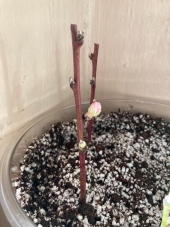DIG 8006 6 Zone Digital AC Sprinkler Controller. This one runs off AC with a 9 volt battery to keep programming intact in memory in the event of a power outage. If you have reliable power or a small generator or other backup, then this is a very versatile unit. You can have multiple systems running at once - say propagation which is 10 secs on every 10 minutes (more or less depending on your conditions) and irrigation to a drip system for more mature plants that you may be growing on either in a bed or pots. You do have to buy a
solenoid valve. I'd recommend 3/4" ID since it marries well to 3/4" PVC and the adaptor connections are available at a good plumbing supply store.
Another much lower tech, ie, less things to go wrong or finesse, and cheaper depending on what materials you have on hand or can scrounge is a Nearing frame. It's pretty straight forward but there are some tricks - no direct sun or you will fry every cutting almost in a instant, using coarse sand aka builders sand for porosity/drainage. Definitely not childrens' play sand - too fine. You can also use clear plastic totes with holes drilled in the bottom and builders sand. If you can't find builders's sand, a 2 or 3 to one perlite to peat mix works well. That's my preference for pots, dish tubs, etc when I want portability since that mix is a GREAT deal lighter than sand when it's wet and, thus, easier to lift. Of the various options here, it all depends on the individual. Does one like to start small and easy and learn as one goes? In that case, a small tote might make more sense. Remember that cuttings can be stuck 1" apart so a 12" x 12" tote will allow you to stick 120+ cuttings although that rarely happens unless you nail the 1" every time. If one likes to jump right in and go for it and not be thrown by the detail mistakes, then investing in the timer, Stixx, shade cloth (maybe), etc. is the way to go.
My Dramm Stix are 30" tall with the standard green heads and they're stuck in the ground about 5". I get good distribution for my 36" inch wide beds (I keep them narrow so that I can easily reach to the middle).
Depending on your water source, you may want to add a filter into the line before the water reaches the solenoid valve. I'm in the city so I only use a chlorine/chloramine filter in line but if I were in the country on a well that was hard water and had iron/sulphur I'd take my water feed after the water softener and add a filter to take the trace softener salts out (they will build up over time and you will see the crystals starting to build on the medium surface. As the salts build, successful propagation will start to decline.). If I was taking my water feed from before the softener, I'd try to filter out the iron and I'd try to warm the water before it hits the cuttings. As you can see, the conditions (power, water, local climate) are the detail devils that you have to figure out. Finding the parts and assembling is pretty easy-ish and straight forward-ish.
I also use a rooting hormone. Some folks will use willow; a lot of folks won't. Each person makes their own choice on that one. Any of the pot forums will have extensive discussions on the subject.
Look up Mike McGroarty on You Tube. Ignore the image of huckster and listen closely to what he's saying. He knows what he's talking about.
Finally, invest in a copy of
The Reference Manual of Woody Plant Propagation. It will pay for itself over and over either in reduced frustration and lost seasons because you just didn't know the cutting characteristics of a plant or in higher, faster profits if you plan to sell your plants (If you do plan to sell, that's a separate discussion that I won't go into here.). Some plants are better from HW cuttings; some are better from SW cuttings; some plants have a window, eg, lilacs from this year's wood just after flowering is finished but before the wood starts to harden under intermittent mist. Hartmann & Kester's Plant Propagation is another good book but probably excessive for most.
Woody perennial plant propagation isn't difficult but there is a learning curve albeit not too long if you listen to what the cuttings are telling you.

If you've got any questions that you can't find answers to, feel free to ask.

 2
2







































